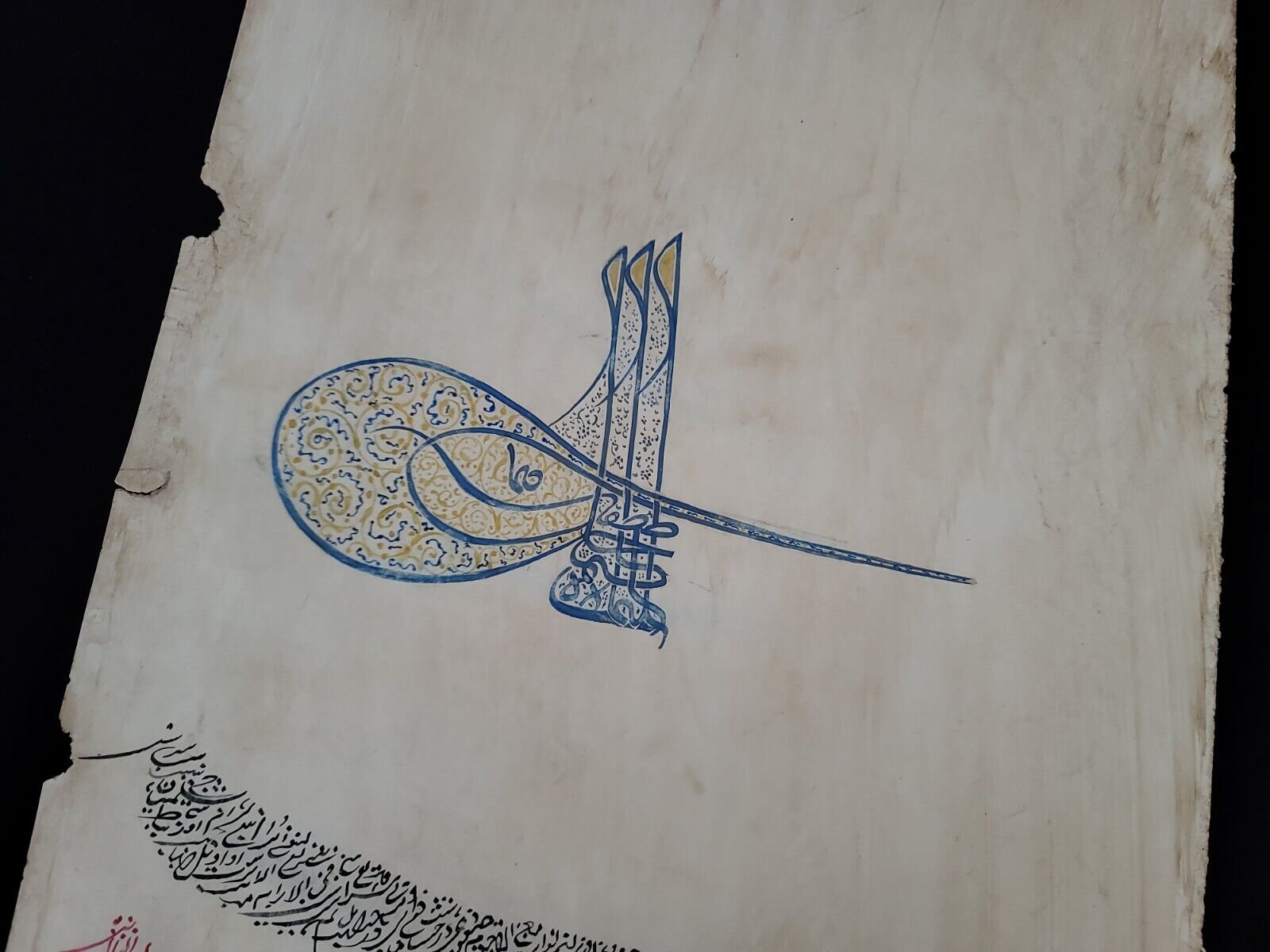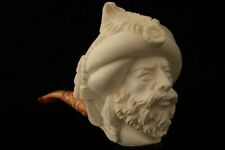Sultan Suleiman The Magnificent Ottoman Manuscript Document Firman Islamic Art

When you click on links to various merchants on this site and make a purchase, this can result in this site earning a commission. Affiliate programs and affiliations include, but are not limited to, the eBay Partner Network.
Sultan Suleiman The Magnificent Ottoman Manuscript Document Firman Islamic Art :
$15999.96
LOT-LSE16. AN IMPORTANT FIRMAN OF SULTAN SÜLEYMAN THE MAGNIFICENT
OTTOMAN TURKEY, DATED.
Turkish manuscript on paper, vertical format, with a bold cobalt-blue tughra, the interstices filled with delicate gold scrolling vine, beneath this 7ll. of elegant gold, black, red diwani script on gold speckled ground, dated. Document measures approximately 30.0" x 10.25". Polished parchment. Gold leaf. Verso is signed.
Suleiman I (Ottoman Turkish: اول, romanized: Süleyman-ı Evvel; Turkish: I. Süleyman; 6 November 1494 – 6 September 1566), commonly known as Suleiman the Magnificent in the West and Suleiman the Lawgiver (Ottoman Turkish: سلطان romanized: Ḳānūnī Sulṭān Süleymān) in his realm, was the tenth and longest-reigning Sultan of the Ottoman Empire from 1520 until his death in 1566. Under his administration, the Ottoman Empire ruled over at least 25 million people.
Suleiman succeeded his father, Selim I, as sultan on 30 September 1520 and began his reign with campaigns against the Christian powers in central Europe and the Mediterranean. Belgrade fell to him in 1521 and the island of Rhodes in 1522–23. At Mohács, in August 1526, Suleiman broke the military strength of Hungary.
Suleiman became a prominent monarch of 16th-century Europe, presiding over the apex of the Ottoman Empire's economic, military and political power. Suleiman personally led Ottoman armies in conquering the Christian strongholds of Belgrade and Rhodes as well as most of Hungary before his conquests were checked at the siege of Vienna in 1529. He annexed much of the Middle East in his conflict with the Safavids and large areas of North Africa as far west as Algeria. Under his rule, the Ottoman fleet dominated the seas from the Mediterranean to the Red Sea and through the Persian Gulf.
At the helm of an expanding empire, Suleiman personally instituted major judicial changes relating to society, education, taxation and criminal law. His reforms, carried out in conjunction with the empire's chief judicial official Ebussuud Efendi, harmonized the relationship between the two forms of Ottoman law: sultanic (Kanun) and religious (Sharia). He was a distinguished poet and goldsmith; he also became a great patron of culture, overseeing the "Golden" age of the Ottoman Empire in its artistic, literary and architectural development.
Breaking with Ottoman tradition, Suleiman married Hürrem Sultan, a woman from his harem, an Orthodox Christian of Ruthenian origin who converted to Islam, and who became famous in the West by the name Roxelana, due to her red hair. Their son, Selim II, succeeded Suleiman following his death in 1566 after 46 years of rule. Suleiman's other potential heirs, Mehmed and Mustafa, had died; Mehmed had died in 1543 from smallpox, and Mustafa had been strangled to death in 1553 at the sultan's order. His other son Bayezid was executed in 1561 on Suleiman's orders, along with Bayezid's four sons, after a rebellion. Although scholars typically regarded the period after his death to be one of crisis and adaptation rather than simple decline, the end of Suleiman's reign was a watershed in Ottoman history. In the decades after Suleiman, the empire began to experience significant political, institutional, and economic changes, a phenomenon often referred to as the Transformation of the Ottoman Empire.
Suleiman the Magnificent (محتشم Muḥteşem Süleymān), as he was known in the West, was also called Suleiman the First (سلطان أول Sulṭān Süleymān-ı Evvel), and Suleiman the Lawgiver سلطان Ḳānūnī Sulṭān Süleymān) for his reform of the Ottoman legal system.
It is unclear when exactly the term Kanunî (the Lawgiver) first came to be used as an epithet for Suleiman. It is entirely absent from sixteenth and seventeenth-century Ottoman sources and may date from the early 18th century.
There is a tradition of western origin, according to which Suleiman the Magnificent was "Suleiman II", but that tradition has been based on an erroneous assumption that Süleyman Çelebi was to be recognised as a legitimate sultan.
On Feb 17, 2024 at 07:26:34 PST, seller added the following information:Sultan Suleiman The Magnificent Ottoman Manuscript Document Firman Islamic Art :
$15999.96

Related Items:
Sultan Suleiman The Magnificent Ottoman Manuscript Document Firman Islamic Art
$19999.95
Sultan Suleiman the Magnificent Hand Carved Block Meerschaum Pipe in CASE 11082
$275.00
Ottoman Sultan Suleiman the Magnificent's Sword Handmade Forged Medieval Sword
$190.00







